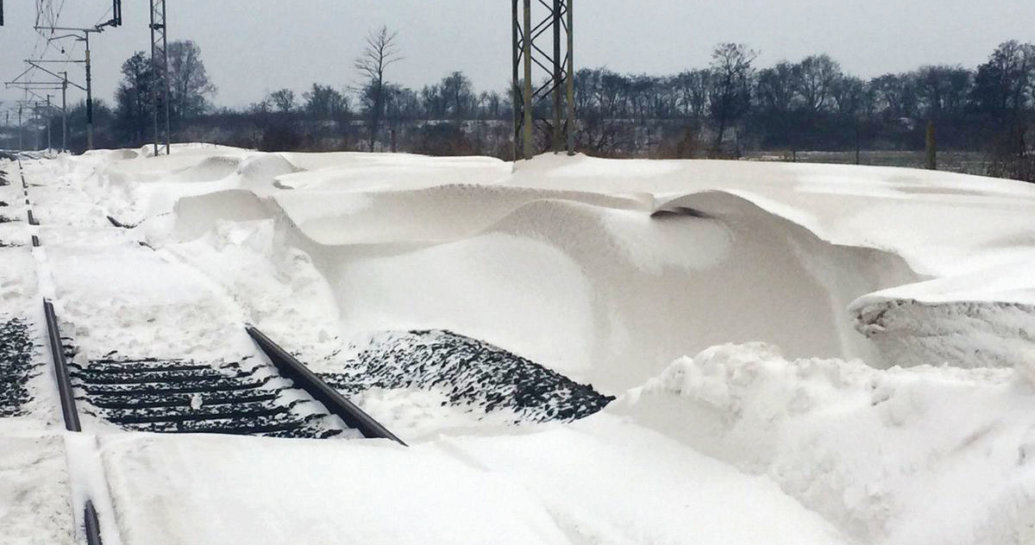Preparing for the impact of winter weather is a crucial task for us.
We work hard throughout the season to minimise delays but ice and snow present unique challenges to the network.
Low temperatures can cause points – movable sections of track that allow trains to move from one line to another – to freeze, stopping trains from accessing certain routes or platforms.
We work closely with train operators to minimise any impact on passenger services during very cold weather and when conditions become extreme, some trains must slow down to keep passengers safe.
We operate a special winter fleet to clear snow and ice from the tracks to help keep passengers and freight operators moving. Our fleet includes snow ploughs, hot air blowers, steam jets, brushes, scrapers and anti-freeze.
Many of the more modern trains running on our network are also fitted with features to help us tackle adverse weather. These include anti-ice systems, wheel slip protection and other modifications on certain parts of the railway.
Ice
Like driving on icy roads, acceleration and braking are much harder on icy tracks. In fact, it’s even more difficult on the railway because the train wheels and rail are both made of steel. This means wheels can slip because it’s harder to get the friction needed to accelerate or brake.
Without the ability to brake effectively, there is a risk trains could miss their stop or overshoot red signals. At worst, these could cause a collision.
Snow
We have snow ploughs to drive through snow. However, it is difficult to maintain and deploy a large fleet across the entire network due to the unpredictable and often relatively mild winter weather in Britain.
We keep snow ploughs at strategic locations around the country, with a larger number in the North of England and Scotland, as they usually experience the most snowfall.
Our sophisticated weather management service also helps us forecast where adverse weather will arrive, informing plans to deal with the worst areas using snow ploughs and other resources.
Can trains run on snow and ice in much colder climates?
Countries with more extreme weather than Britain have the same problem and must sometimes slow down their trains to cope with severe conditions. In recent winters, heavy snow has caused substantial disruption to rail networks across Europe.
In Britain, we use speed restrictions to reduce the risks of trains missing their stops or passing signals. Britain is also investing in more modern trains that will perform better in snow and ice.
Derailments
Very cold weather can cause a derailment – when a train comes off the tracks. Specifically, freeze thaw can lead to this problem. This is when a very wet autumn is followed by a sharp drop in temperature, which can freeze the rain in the ballast (the stone bed that supports the tracks) and move the track when it thaws.
Other potential issues with track include frozen ballast, which prevent us from using tamping machines to realign rails and ensure a smooth level along the rail.
Read more about how we respond to winter weather
Find out more about our seasonal track treatment and weather support fleet




